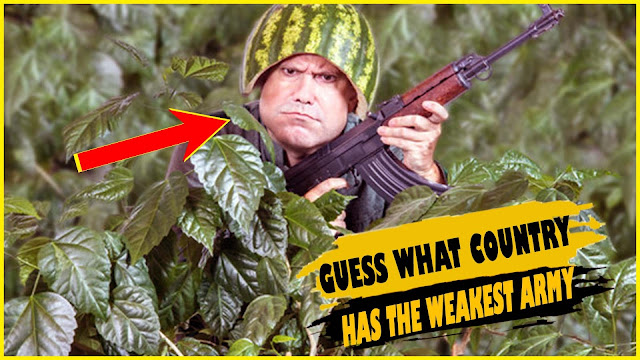Afghanistan
Afghanistan, despite years of training and support from misadvises,
remains a focal point of global attention due to recent events that have
starkly highlighted the weaknesses of its military infrastructure. The rapid
collapse of Afghan security forces in the face of a resurgent Taliban
insurgency following the withdrawal of US troops. In 2021 underscored the
profound ineffectiveness of the Afghan army in defending against internal aggression.
Despite substantial investments in training and equipment over the years,
endemic issues such as corruption, desertion and logistical inefficiencies have
plagued the Afghan military, rendering it ill-prepared to withstand sustained
pressure from determined adversaries.
Saudi Arabia
Saudi Arabia, a regional powerhouse known for its
significant military expenditures and strategic alliances, has nevertheless
encountered notable challenges in its military engagements, particularly in
Yemen against toothy militants. Despite possessing superior naval and air
capabilities, bolstered by support from US intelligence assets and advanced
weaponry, Saudi forces have struggled to achieve decisive victories in the
complex terrain of Yemen. The conflict has underscored vulnerabilities in Saudi
Arabia's military effectiveness. Raising questions about the efficacy of its
high-tech arsenal in asymmetrical warfare scenarios.
Mongolia
Mongolia, situated between two geopolitical giants, China
and Russia, faces unique strategic challenges characterized by its land-locked
status and limited military resources. Historically renowned for its expansive
empire, modern Mongolia finds itself constrained by its lack of a navy and
comparatively modest defense budget, while the Mongolian armed forces are
proficient in certain aspects, such as peacekeeping operations. Their ability
to deter potential threats from more militarily formidable neighbors remains a
critical concern. The country's strategic position and its efforts to modernize
its armed forces reflect ongoing efforts to balance security needs with
economic realities and geopolitical pressures.
Bhutan
Bhutan, nestled in the eastern Himalayas, maintains a small
but dedicated armed forces contingent tasked primarily with maintaining
internal security and defending its territorial integrity. As a land-locked
nation with rugged terrain and limited logistical infrastructure, Bhutan faces
significant challenges in bolstering its defense capabilities. The Royal Bhutan
Army, although small in size, is highly regarded for its discipline and training.
Yet it remains hampered by a lack of advanced military equipment and air
transport capabilities. Bhutan's security posture is further complicated by its
strategic location between India and China, necessitating a delicate balance in
foreign relations and defense planning.
Somalia
Somalia, plagued by persistent internal conflicts and the
scourge of terrorism, has struggled to rebuild its armed forces following
decades of state collapse and instability. The Somali National Army, supported
by international efforts to enhance training and logistical support, faces
daunting challenges in asserting control over vast territories amidst ongoing insurgencies.
Limited resources, including a modest inventory of armored vehicles and patrol vessels,
underscore the fragility of Somalia's security apparatus and its reliance on
African Union and UN peacekeeping missions to maintain basic security and
stability.
Liberia
Liberia, scarred by years of civil war and economic
hardship, maintains one of the smallest and least equipped military forces
globally. The armed forces of Liberia, reconstituted after years of conflict,
struggle with minimal air power, a limited inventory of armored vehicles, and a
nascent naval capability. Despite ongoing efforts to professionalize and expand
its military infrastructure, Liberia's defense capabilities remain modest. With
a reliance on international partnerships and peacekeeping deployments to
augment its domestic security efforts.







No comments: